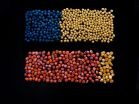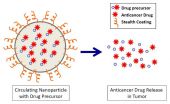(Press-News.org) An illuminating study compares the willingness of stage IV cancer patients, and their caregivers; to pay to extend their lives by one year against that of other end-of-life improvements. The research, led by members of the Lien Centre for Palliative Care (LCPC) and collaborators from the National Cancer Centre Singapore, was recently published in the journal, Palliative Medicine.
Patients with advanced cancer or other life limiting illnesses often have to consider how much money they are willing to spend on high cost treatments that result in only moderate improvements in length or quality of life. These decisions are very difficult for patients to make, and in some cases the decision is entirely deferred to a family caregiver.
Past research has shown that in addition to extending life, being free of pain and dying at home are important considerations for people nearing the end of their lives. However, the value that patients place on these considerations or their willingness to pay for either was not previously known.
A team led by Professor Eric Finkelstein and Assistant Professor Chetna Malhotra from the LCPC in Duke-NUS Graduate Medical School (Duke-NUS) administered surveys to 211 patients with stage IV cancer and their informal caregivers to find out more about their end-of-life preferences.
Participants were asked to choose their most-preferred end-of-life scenarios out of a series of options that varied along key dimensions, including years of life remaining, degree of pain experienced, place of death, level of burden on caregivers, quality of healthcare experience, cost, and source of payment (cash, Medisave, or family members' cash or Medisave). Using the results, the authors quantified patients and caregivers willingness to pay to improve their end of life experience.
They found that patients' willingness to pay to extend their life by one year was valued at S$18,570, which is lower than their willingness to pay to avoid severe pain (S$22,199), or to die at home (S$31,256), and only slightly more than their willingness to pay to receive a high-quality health-care experience (S$16,191). Caregivers had a three-fold greater willingness to pay than patients to extend life by one year and for most of the other features considered.
Dr. Finkelstein believes these results suggest that health insurers and physicians may be putting too much emphasis on life extending treatments for these patients. He notes, "Results highlight the importance of pain management, supporting home deaths, and addressing other end-of-life concerns, in addition to efforts to extend life."
Dr. Malhotra added that the differences in patients' and caregivers' willingness to pay suggest the need for eliciting patient preferences directly during treatment decision making as opposed to relying on caregiver input, "We hope this research helps foster greater communication between patients, caregivers, and doctors".
The team is planning to extend this research to test patient decision aids that can help ensure that patients' end-of-life experience is most consistent with their preferences.
INFORMATION:
University of Adelaide researchers have shown there are two critical windows during the developmental pathway to adulthood when exposure to junk food is most harmful, particularly for female offspring.
This work leads on from earlier findings which showed that mothers who eat junk food while pregnant are programming their babies to be addicted to a high fat, high sugar diet by the time they are weaned.
Their latest laboratory studies reveal there may be a chance to turn around this junk food addiction in two critical windows--equating to late pregnancy and in adolescence ...
The use of technology in daily life is getting easier all the time as people accumulate knowledge and skills in information and communications technology. However, the most important thing in developing health care services, for example, is to take into account people's day to day lives and their subjective experience of the utility of using services. For example, people's previous bad experience of using a service is reflected for a long time in their use of the service in the future, and thus the dissemination of new service models is a lot slower than might be imagined. ...
DARIEN, IL - A new study suggests that symptoms of depression and insomnia are the strongest predictors of having frequent nightmares.
Results show that 3.9 percent of participants reported having frequent nightmares during the previous 30 days, including 4.8 percent of women and 2.9 percent of men. Frequent nightmares were reported by 28.4 percent of participants with severe depressive symptoms and 17.1 percent of those with frequent insomnia. Further analysis that adjusted for potential confounders found that the strongest independent risk factors for nightmares were ...
Bethesda, MD (April 2, 2015) -- Non-alcoholic steatohepatitis (NASH), the more severe form of non-alcoholic fatty liver disease (NAFLD) that can progress to liver fibrosis and cirrhosis, is associated with leakiness of the intestinal wall, which in turn may worsen liver disease, according to research1 published in Cellular and Molecular Gastroenterology and Hepatology, the new basic science journal of the American Gastroenterological Association.
"Our study strengthens the clinical association between intestinal permeability and NASH, although we were unable to identify ...
Accurate blood pressure measurement (BP) is fundamental to the early diagnosis of hypertensive disorders in pregnancy, says a review published 1 April, 2015, in The Obstetrician & Gynaecologist (TOG).
The diagnosis and management of hypertensive disorders in pregnancy, as well as obstetric haemorrhage, sepsis and safe abortion, are guided in part by the measurement of BP. These conditions contribute to more than half of all maternal deaths globally, so the accuracy of BP measurement is vital, the review concludes.
The review explains that BP monitoring is the most ...
BATON ROUGE - LSU Psychology Professor Megan H. Papesh was part of a research team whose study appeared in the online-first edition of the Journal of Neuroscience on Wednesday, April 1.
The research, jointly conducted by scientists from the Barrow Neurological Institute and Arizona State University, involves recording single-neuron activity in the brains of epilepsy patients who require electrodes implanted to monitor seizures. With the electrodes in place, processes such as perception and memory can be studied at the level of individual neurons.
The research focused ...
As man-made threats to coral reefs mount and interest in conserving reef ecosystems grows, scientists have turned to studying extremely remote and uninhabited reefs in an effort to understand what coral reefs would be like in the absence of humans. A number of islands and atolls in the Pacific Ocean remain virtually untouched by human influence, situated hundreds of kilometers from the nearest human populations.
A study published today by scientists at the University of Hawai'i at Mānoa (UHM) School of Ocean and Earth Science and Technology (SOEST), the National ...
MADISON, Wis. - Clearing grasslands to make way for biofuels may seem counterproductive, but University of Wisconsin-Madison researchers show in a study today (April 2, 2015) that crops, including the corn and soy commonly used for biofuels, expanded onto 7 million acres of new land in the U.S. over a recent four-year period, replacing millions of acres of grasslands.
The study -- from UW-Madison graduate student Tyler Lark, geography Professor Holly Gibbs, and postdoctoral researcher Meghan Salmon -- is published in the journal Environmental Research Letters and addresses ...
Use of a class of insecticides, called neonicotinoids, increased dramatically in the mid-2000s and was driven almost entirely by the use of corn and soybean seeds treated with the pesticides, according to researchers at Penn State.
"Previous studies suggested that the percentage of corn acres treated with insecticides decreased during the 2000s, but once we took seed treatments into account we found the opposite pattern," said Margaret Douglas, graduate student in entomology. "Our results show that application of neonicotinoids to seed of corn and soybeans has driven ...
Delving into the world of the extremely small, researchers are exploring how biodegradable nanoparticles can precisely deliver anticancer drugs to attack neuroblastoma, an often-deadly children's cancer.
By bringing together experts in pediatric oncology with experts in nanotechnology, researchers at The Children's Hospital of Philadelphia aim to thread the needle of delivering effective doses of cancer-killing agents while avoiding toxicity in healthy tissues. The team's new research shows that this approach inhibits tumor growth and markedly prolongs survival in animal ...


